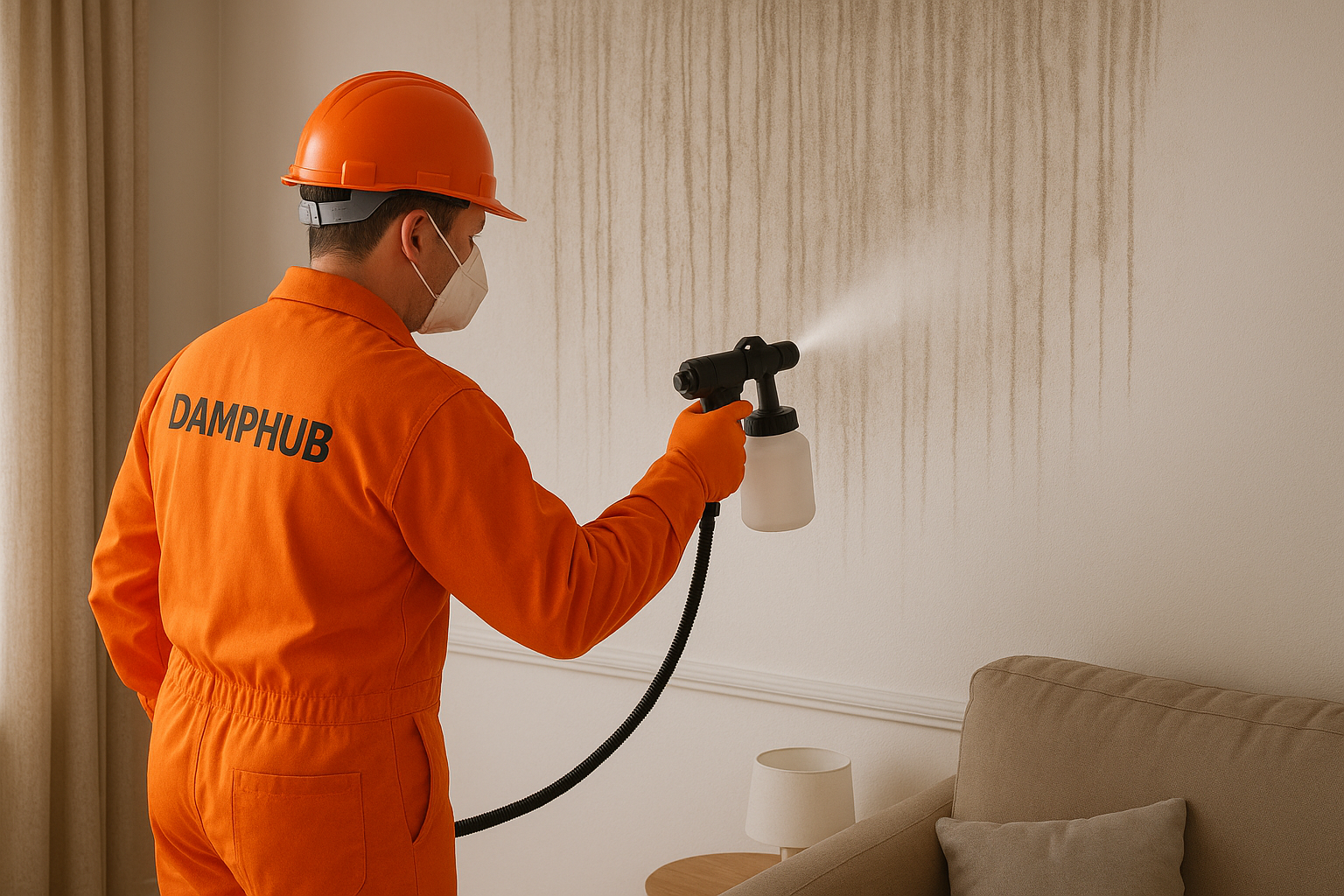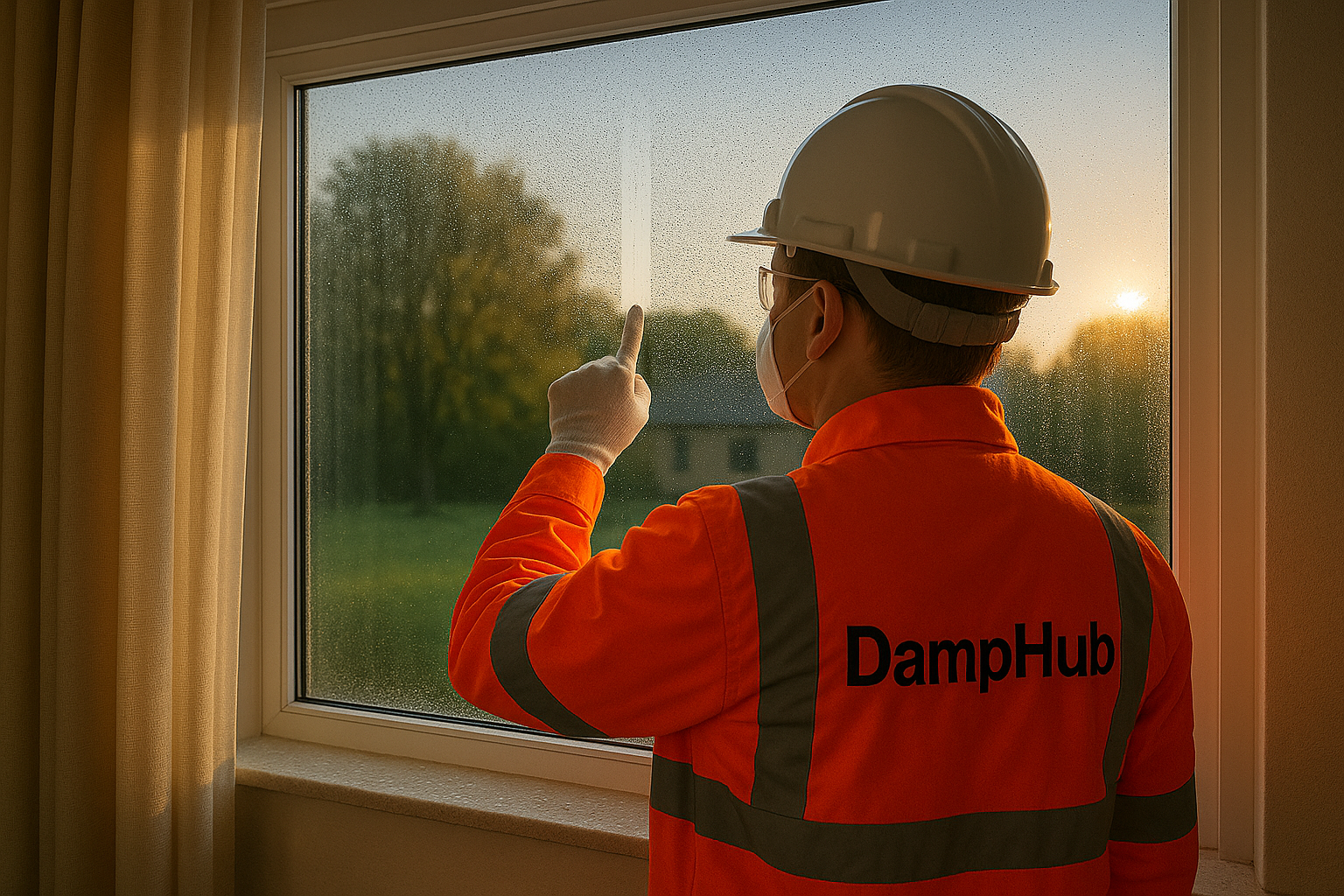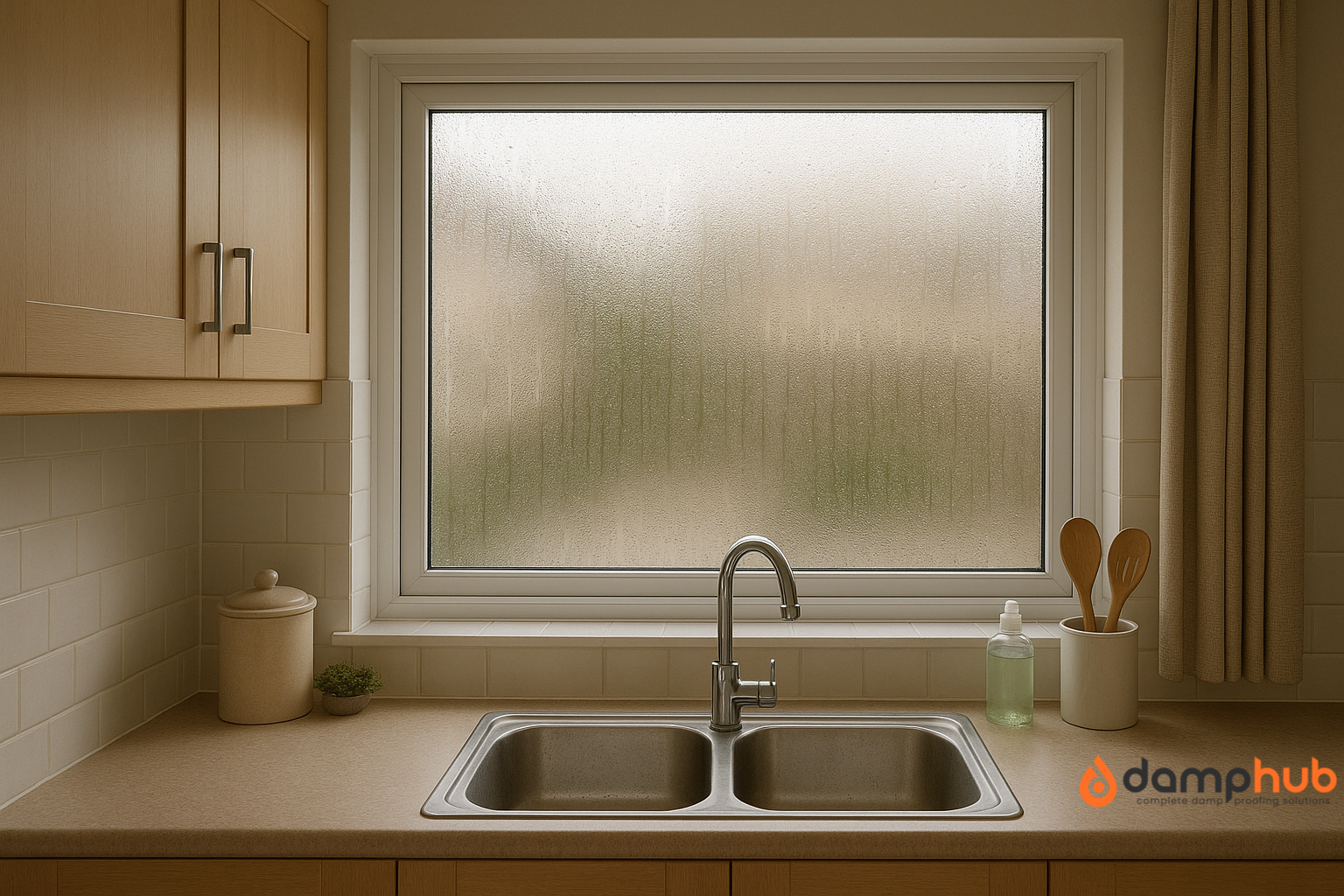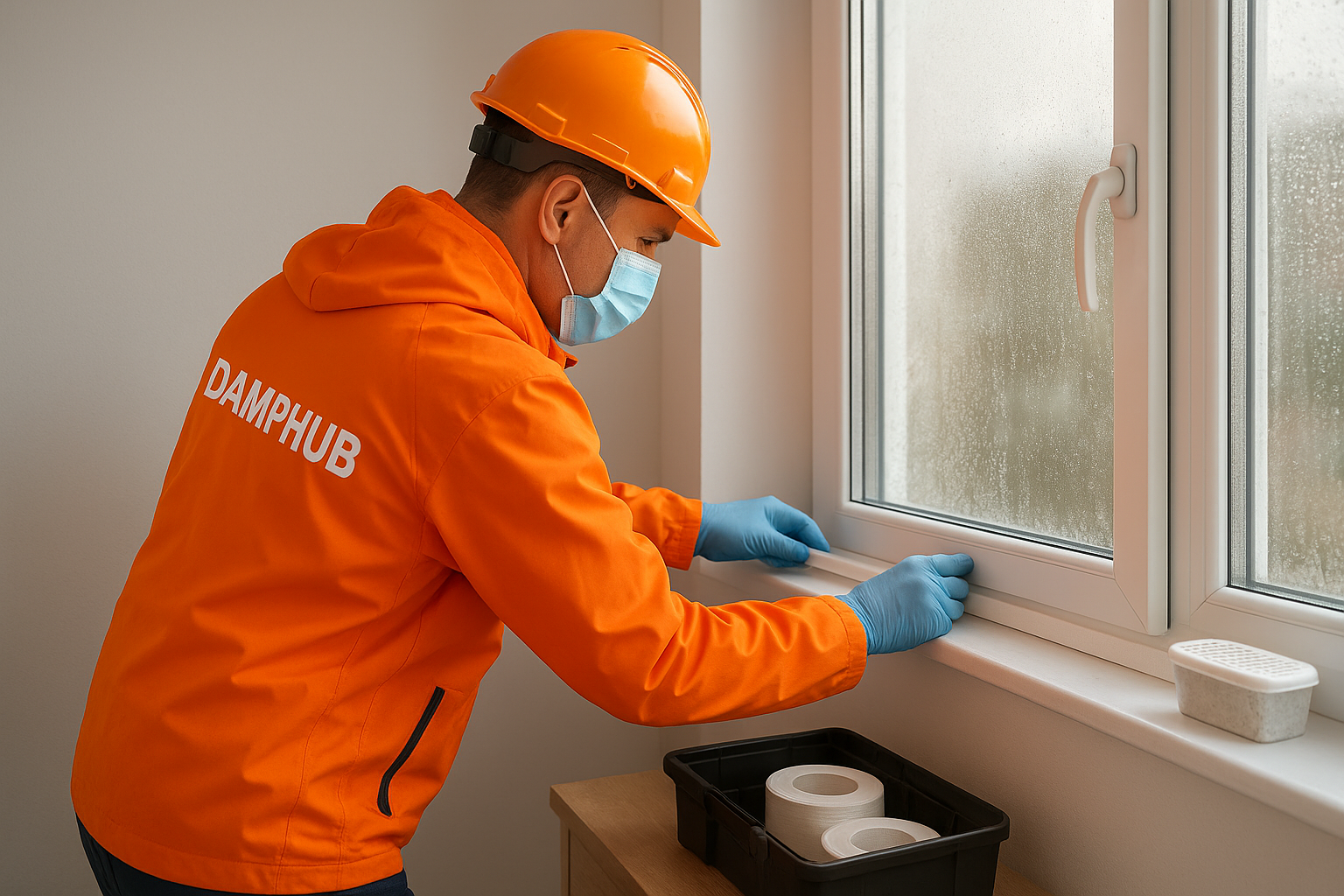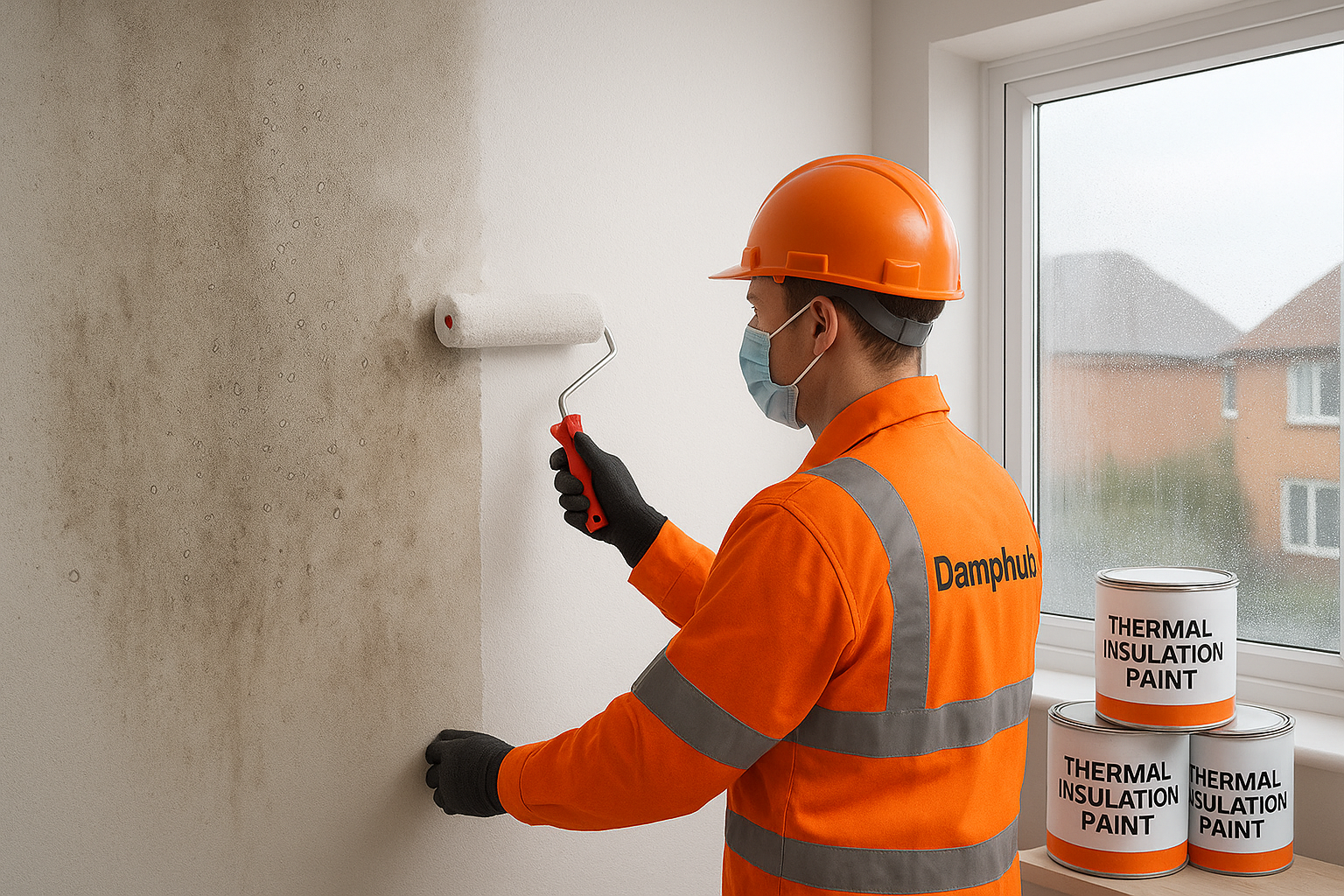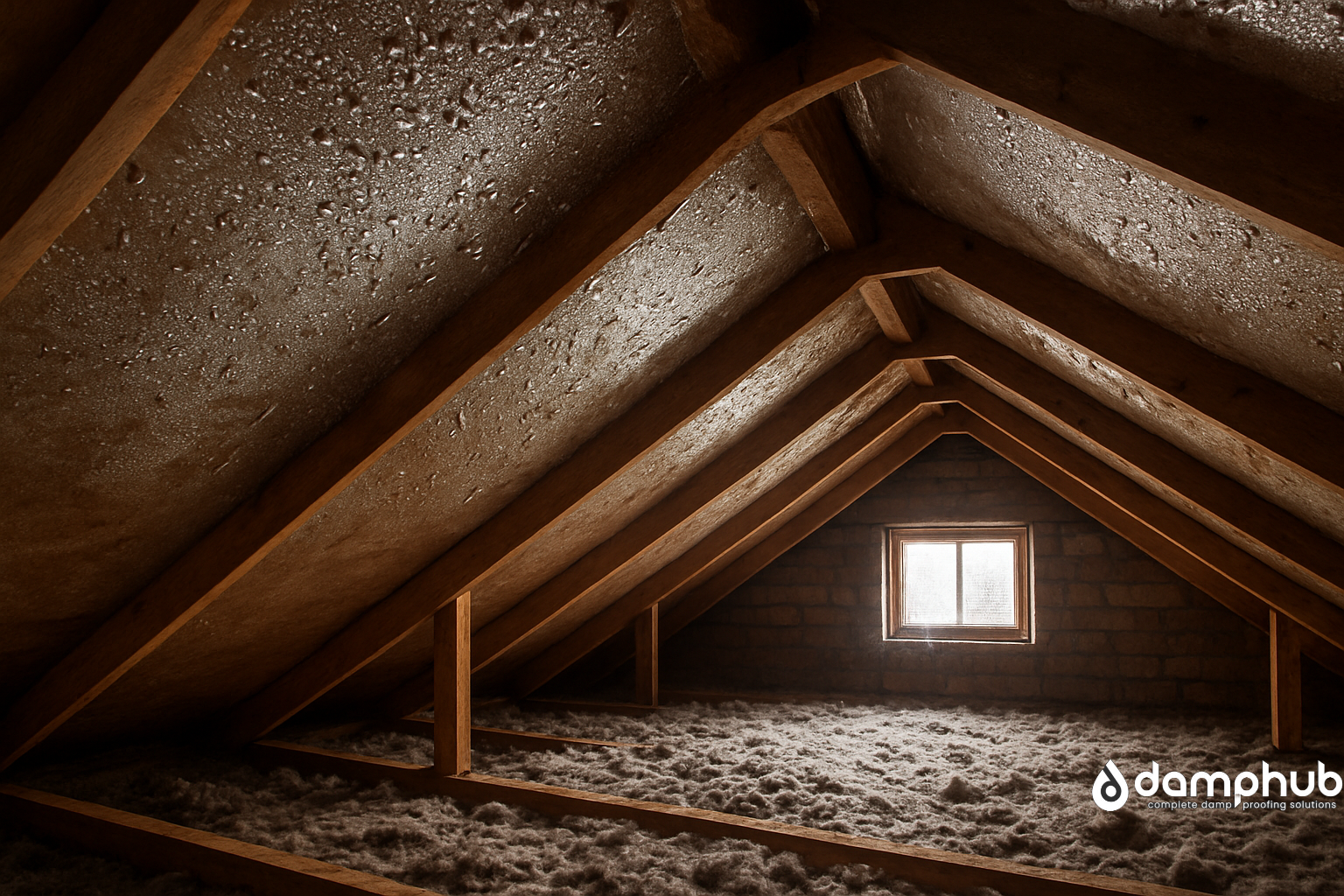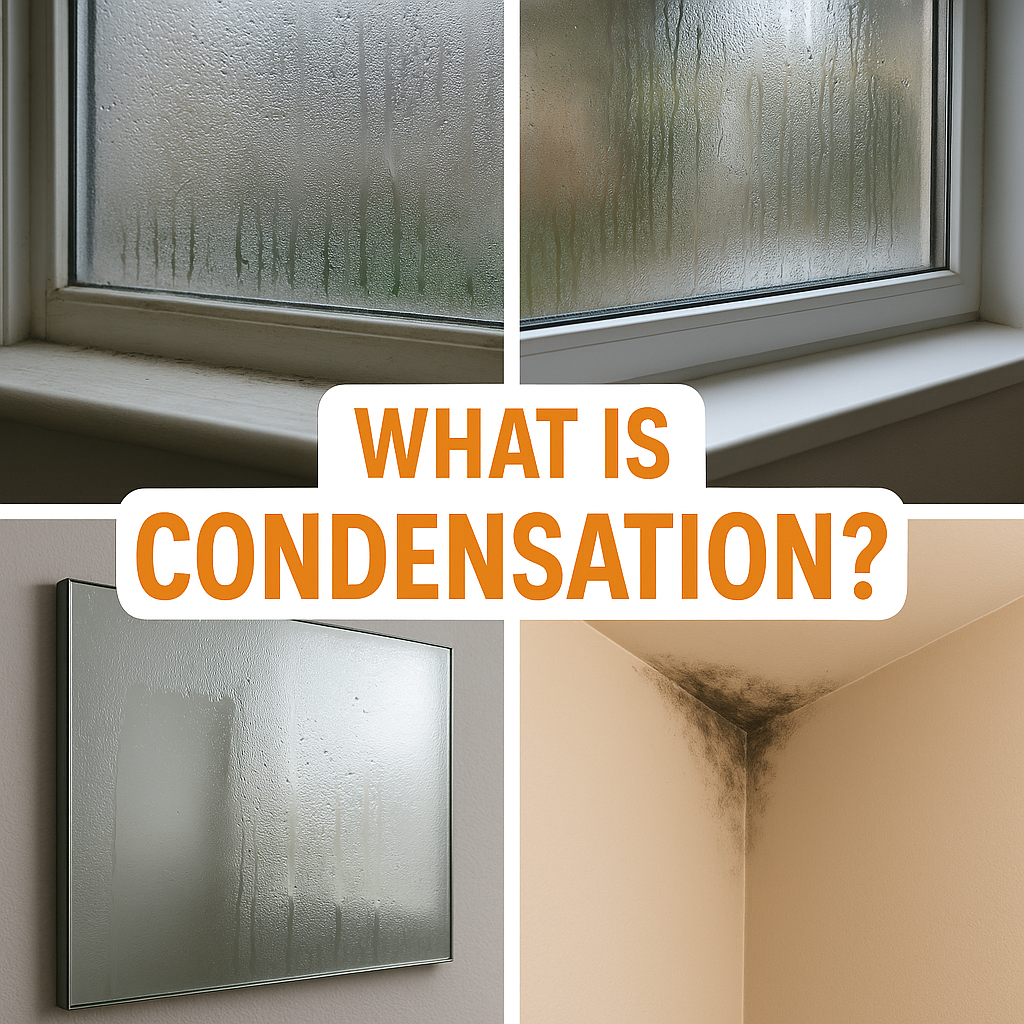
If you’ve ever woken up to misty windows, damp patches on your walls, or even water droplets gathering on the inside of your loft, you’ve seen condensation at work. It’s one of the most common damp problems in UK homes, yet it’s often brushed off as “just a bit of moisture.” Left unchecked, condensation can lead to black mould, damage to plaster and timber, and even poor indoor air quality that affects your health.
Put simply, condensation happens when warm, moisture-laden air hits a cold surface and turns into liquid water. Think of your bathroom mirror steaming up after a hot shower or water collecting on single-glazed windows in winter.
It’s not just a nuisance — if condensation keeps happening in your home, it’s usually a sign of deeper ventilation or insulation issues. And unlike rising damp or penetrating damp, condensation is entirely generated by everyday living: cooking, showering, drying clothes indoors, even breathing while you sleep.
What Causes Condensation?
Condensation boils down to three main factors working together: moisture, temperature, and ventilation.
- Excess moisture in the air: Every day activities release surprising amounts of water vapour:
- A single load of washing left to dry indoors can release up to 2 litres.
- Cooking without lids adds steam to the air.
- Showers, baths, and even breathing add constant moisture to the environment.
- Cold surfaces: When this warm air touches cold walls, windows, or ceilings, the air cools and its capacity to hold water drops. The excess moisture has nowhere to go but onto the surface — that’s why windows drip in winter mornings.
- Poor ventilation: Without good airflow, that moisture builds up indoors rather than escaping. This is common in homes with blocked vents, unused chimneys, or sealed-up modern windows with no trickle vents.

👉 Good to Know: Not all window condensation means you have a problem. For example, condensation on outside windows often appears on modern double-glazed units in the early morning. Far from being a fault, this actually means your windows are insulating well — the outside pane is staying cold while your home is keeping heat inside.
How Can You Tell If Your Home Has a Condensation Problem?
Occasional mist on your windows is normal. But when condensation becomes a regular or widespread issue, you’ll start to see other warning signs:
- Condensation inside windows on most mornings.
- Black mould patches are forming around window frames, bathroom walls, or behind furniture.
- Musty odours, especially in bedrooms and lofts.
- Peeling wallpaper or damp plaster, particularly on external walls.
- Condensation in the loft — visible on rafters or insulation, often leading to mould growth.
These are clear indicators that condensation isn’t just a once-off event but an ongoing damp issue in the home.
How to Test for Condensation
Sometimes homeowners confuse condensation with rising damp or even a hidden leak. Before spending on surveys, you can carry out a simple check:
- The foil test
- Tape a square of kitchen foil to the damp wall overnight.
- If the moisture appears on the room side of the foil, it’s condensation.
- If the damp is behind the foil, it may be rising or penetrating damp.
- Check the time and location
- Morning window mist → usually condensation from overnight breathing.
- Bedroom corners and ceilings → poor ventilation.
- Random damp patches on walls → could be another type of damp.
- Use a damp meter
Affordable moisture meters can show whether the issue is surface-level (condensation) or deeper within the wall (rising/penetrating damp).
How Do I Stop Condensation in My House?
Condensation is frustrating, but unlike rising damp or penetrating damp, it’s usually down to how we use our homes. That means with some changes to habits, better ventilation, and a few smart products, you can reduce or even stop it completely.
Here are the four main battlegrounds where condensation tends to show up — and what actually works in each one.
1. Condensation on Windows
Windows are the number-one spot for condensation. They’re cold surfaces where warm indoor air cools rapidly, releasing moisture. Left untreated, this can lead to mould on sills, stained plaster, or even rotting timber frames.
What to do about it:
- Day-to-day fixes: Open trickle vents if fitted, leave blinds slightly raised to let air circulate, and wipe down glass every morning.
- Condensation inside windows: This usually means humidity indoors is too high. Causes include drying clothes on radiators, cooking without lids, or long, hot showers with poor ventilation. A compact dehumidifier near problem windows can make a big difference.
- Condensation on outside windows: Believe it or not, this is a good thing — it means your glazing is working. Unless it’s excessive, you don’t need to fix this.
- Overnight bedroom condensation: At night, especially in winter, bedroom windows take the brunt. Keep doors ajar, use moisture-absorbing crystals on sills, or run a dehumidifier overnight.
- Winter build-up: This peaks when it’s freezing outside. Thermal curtains and a steady heating routine help balance out the temperature difference.
👉 Pro Tip: Wiping your windows every morning isn’t a solution — it’s a warning sign. Over time, hidden damp can creep into plaster and frames. Investing in better ventilation, or even secondary glazing, prevents far more expensive repairs later.
👉 For more details, see our full guide on how to stop condensation on windows.
2. Condensation in the Loft
Lofts are tricky because condensation builds silently out of sight. Warm, damp air from your home rises, hits the cold roof, and condenses. Before long, you might have soggy insulation, black mould on rafters, or even rotting timbers.
How to reduce loft condensation:
- Make sure bathroom and kitchen extractor fans vent outside, not into the loft.
- Check soffit vents and ridge vents aren’t blocked.
- Consider adding roof ventilation if you don’t already have it.
- Insulate properly — uneven insulation leaves cold spots where condensation forms.
💡 Good to Know: Loft condensation often appears in winter when homes are sealed tight. The first giveaway is usually black spotting on rafters — an early warning worth acting on.
👉 For more, see our article on condensation in lofts.
3. Condensation in the Bedroom
Bedrooms suffer because people breathe out moisture all night in a closed room. By morning, you’ll often see water droplets streaming down the glass.
How to tackle bedroom condensation:
- Keep a small gap in the window or use trickle vents.
- Move wardrobes and furniture away from cold external walls to let air circulate.
- Use moisture absorbers or a condensation trap on problem surfaces.
- Avoid drying clothes in the bedroom — a hidden but common cause of excess humidity.
👉 For deeper solutions, check our guide to condensation in bedrooms.
4. Condensation in the Bathroom
Bathrooms are the steam factory of any home. Without proper ventilation, warm air condenses on walls, ceilings, and mirrors, leading to black mould and peeling paint.
Best ways to stop bathroom condensation:
- Install or upgrade your extractor fan. The best extractor fan for bathroom condensation should run on a timer or humidity sensor so it doesn’t switch off too soon.
- Keep bathroom doors shut while showering, then open windows afterwards to let damp air escape.
- Apply anti condensation paint to ceilings — it doesn’t stop moisture forming, but it makes surfaces more mould-resistant.
- For a budget-friendly extra, try a Lidl window condensation gadget or compact dehumidifier to suck up excess steam.
💡 Try This: Pair an extractor fan with an anti-condensation paint finish. The fan removes moisture at the source, while the paint stops black mould from clinging to ceilings. Together, they’re far more effective than either one alone.
👉 For detailed advice, see our bathroom condensation guide
How To Stop Condensation Through Products and Treatments
Sometimes, lifestyle changes aren’t enough on their own. That’s when anti-condensation products and gadgets come in handy.
- Anti condensation paint: This type of paint contains insulating microbeads that help keep walls warmer, reducing water droplets forming. It’s particularly useful in problem spots like north-facing external walls or behind furniture.
- Lidl window condensation gadget: From time to time, budget gadgets pop up that promise to solve condensation. These can work as a short-term fix, but don’t expect miracles. They’re best used alongside proper ventilation and heating.
- Condensation trap: Small, low-cost traps filled with moisture-absorbing crystals can be handy in wardrobes, cupboards, and bedrooms. They won’t fix a whole-house problem, but they can keep mould at bay in localised spots.
👉 Try This: If you’re unsure which solution to try first, start small. Place condensation traps in bedrooms, repaint one problem wall with anti-condensation paint, and upgrade your bathroom extractor fan. You’ll quickly see which intervention has the biggest impact before spending more.
How to Prevent Condensation Long-Term
Day-to-day fixes help, but the real goal is to keep your home consistently dry, comfortable, and mould-free. That means tackling the underlying causes, not just wiping windows each morning. Here’s how you can make longer-lasting improvements:
Ventilation
Extractor fans in kitchens and bathrooms are non-negotiable. Without them, moisture from cooking and showers simply drifts through the house, condensing on cold surfaces. Use trickle vents on windows where possible, and crack windows open regularly — even in winter — to refresh the air.
Heating Balance
Condensation thrives in homes where temperatures swing between very warm and very cold. Instead of blasting the heating twice a day, aim for steadier background warmth. This keeps walls and windows warmer, making condensation less likely to form.
Insulation Upgrades
Cold walls and roofs are prime spots for condensation. Loft insulation, cavity wall insulation, and modern double glazing help keep surfaces warm enough to avoid moisture build-up. In stubborn areas, a coat of anti condensation paint can make walls more resistant to damp patches.
Lifestyle Tweaks
Small everyday changes make a surprising difference:
- Dry clothes outside or use a vented tumble dryer, not a radiator.
- Pop lids on pans to stop steam flooding the kitchen.
- Avoid pushing large furniture directly against external walls — ever noticed mould behind a wardrobe? That’s trapped moisture.
- Place a condensation trap or moisture absorber in problem corners.
💡 Good to Know: Some quick-fix gadgets, like the popular Lidl window condensation gadget, can help manage daily moisture, but they won’t solve the root causes. Use them alongside proper ventilation and heating for best results.
👉 For more in-depth strategies, read our full guide on how to stop condensation altogether, where we break down seven proven methods that work in UK homes.
Final Thoughts
Condensation may look like a small inconvenience — misty windows or damp bathroom mirrors — but left unchecked, it can spiral into mould growth, rotten timber, and unhealthy indoor air.
The good news? Unlike rising or penetrating damp, it’s one of the easier damp problems to control. With better ventilation, small product fixes, and some habit changes, most homeowners can get results quickly.
👉 For more help, see our related guides on condensation in lofts, anti-condensation paints, and the best extractor fans for bathrooms.
By understanding what condensation is, what causes it, and how to stop it, you’ll not only protect your property but also make your home healthier to live in.
Frequently Asked Questions About Condensation

-
How to Tell if It’s Damp or Condensation?
Condensation usually appears on cold surfaces (windows, walls, mirrors) and wipes away easily. Rising or penetrating damp tends to leave stains, flaking paint, or a musty smell. If in doubt, a damp meter can help confirm the difference.
Tip: If you’re unsure whether it’s condensation or damp, always check nearby ventilation. Poor airflow nearly always points to condensation, while structural issues are more often behind damp.
-
How to Know if It’s Condensation or a Leak?
If the problem shows up only after rain, it’s likely a leak or penetrating damp. If it appears every morning, it’s almost certainly condensation. Look at the pattern: leaks tend to be localised, while condensation is often spread across multiple cold surfaces.
-
Does Condensation Mean My House Is Too Cold?
Not always. Condensation can happen in warm homes too, especially if ventilation is poor. However, colder houses do make it worse because cold surfaces encourage water droplets to form. Keeping a steady background heat helps.
-
Is Condensation Worse in Older Homes?
Yes — older homes often have single glazing, solid walls without insulation, and less effective ventilation. That combination makes them more vulnerable to condensation compared to modern builds.
-
Can Dehumidifiers Help with Condensation?
Yes, but treat them as a support tool, not a cure. A good dehumidifier can pull litres of water from the air daily, reducing surface condensation and mould growth. But if the root issue is lack of ventilation or insulation, you’ll need to address that too.

